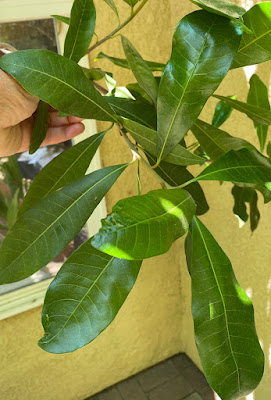This post describes the Pouteria plants which survived multiple winters and summers in Davis, California.
My Montero Lucuma plant (Pouteria lucuma biotype Montero) was started from the seed of the tree growing at the San Diego botanical garden. Below are the pictures of the fruit from 2017.
The tree is over 8 ft now and I just noticed the first flower bud on it, the picture below.
The Montero biotype tree has short internodes with dark green leaves, the picture below.
My second Lucuma tree was started from a yellow type of Lucuma fruit in 2017 as well. This tree is now well over 10 feet and bloomed as least once already last year. I just found new flower buds on it, the picture is below.
The leaves on this tree are larger, medium green, and the internodes are longer, see the picture below.
I purchased my Canistel tree (Pouteria campechiana) as a small seedling from Ben’s Subtropicals during the Festival of Fruit in San Luis Obispo in 2016. This turned out to be the most vigorous Pouteria I have. The tree bloomed already for a number of years. Probably 10-11 feet tall now.
The fourth Pouteria I have in the ground is Cinnamon Apple, Pouteria hypoglauca. I purchased this tree in 2017 from the Roger Meyer estate. While this tree never bloomed yet, I’m still surprised that it can survive in my climate especially after the winter we just had in 2022-2023. Below is a picture of one of the branches ends. This tree is about 4 feet tall.














